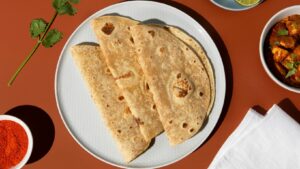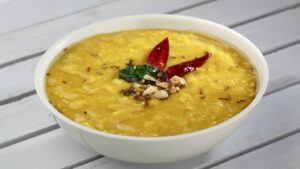Indian cuisine, renowned for its vibrant flavors and aromatic spices, offers a treasure trove of healthy recipes that tantalize the taste buds while nourishing the body. With a rich culinary heritage, Indian dishes blend a variety of ingredients like lentils, vegetables, and whole grains to create meals that are both delicious and nutritious. These recipes are not only bursting with flavor but also packed with essential nutrients, making them a perfect choice for health-conscious individuals.
From the savory goodness of dal to the wholesome delight of vegetable curries, Indian healthy recipes cater to diverse dietary preferences and needs. The use of traditional spices like turmeric, cumin, and ginger not only enhances taste but also provides numerous health benefits, including anti-inflammatory and antioxidant properties. Whether one is a seasoned cook or a kitchen novice, exploring Indian healthy recipes can be an exciting culinary adventure that promotes a balanced lifestyle.
Benefits Of Indian Cuisine
Indian cuisine offers numerous health benefits through its diverse and nutrient-rich recipes. It combines vibrant flavors with essential nutrients to promote well-being.
Nutritional Value
 Indian recipes are packed with nutrition, using ingredients like lentils, vegetables, and spices. Lentils provide protein and iron, crucial for muscle and blood health. Vegetables contribute vitamins and minerals essential for immune function. Spices like turmeric and ginger offer anti-inflammatory and antioxidant properties, supporting digestion and reducing inflammation (NCBI).
Indian recipes are packed with nutrition, using ingredients like lentils, vegetables, and spices. Lentils provide protein and iron, crucial for muscle and blood health. Vegetables contribute vitamins and minerals essential for immune function. Spices like turmeric and ginger offer anti-inflammatory and antioxidant properties, supporting digestion and reducing inflammation (NCBI).
Variety Of Ingredients
Indian cuisine boasts a wide array of ingredients, ensuring balanced nutrition. Seasonal vegetables, whole grains, and legumes are staples. Dishes like Aloo Gobi and Dal Tadka employ fresh produce and varied spices, creating diverse flavor profiles. This variety caters to different dietary needs, making Indian cuisine both versatile and inclusive.
Indian Healthy Recipes
Indian cuisine offers an array of healthy recipes, rich in flavor and nutrients, suitable for diverse dietary preferences. Here are some popular options that combine traditional ingredients with health benefits.
Lentil Dishes
 Lentils form the backbone of many Indian dishes, offering significant nutritional value. Dal Tadka combines yellow lentils with spices like cumin and turmeric, creating a protein-rich meal. Moong Dal is light and comforting, prepared with green gram lentils, an excellent source of iron and dietary fiber. Each lentil dish can be tailored with regional spices to enhance both taste and health.
Lentils form the backbone of many Indian dishes, offering significant nutritional value. Dal Tadka combines yellow lentils with spices like cumin and turmeric, creating a protein-rich meal. Moong Dal is light and comforting, prepared with green gram lentils, an excellent source of iron and dietary fiber. Each lentil dish can be tailored with regional spices to enhance both taste and health.
Vegetable Curries
Vegetable curries bring a burst of flavors and nutritional benefits. Aloo Gobi features potatoes and cauliflower, infused with spices, providing vitamins and antioxidants. Palak Paneer pairs spinach with paneer, delivering calcium and vitamin A. These dishes offer flexibility, allowing the use of seasonal produce to maximize freshness and variety.
Whole Grain Breads
Whole grain breads in Indian cuisine form a wholesome complement to main dishes. Roti is made using whole wheat flour, adding fiber and nutrients to meals. Bajra Roti utilizes millet flour, offering magnesium and phosphorus. These breads not only enhance satiety but also provide essential minerals and vitamins.
Tips For Preparing Indian Healthy Recipes At Home
Preparing Indian healthy recipes at home involves selecting the right ingredients and balancing flavors effectively. Attention to these details enhances the nutritional benefits and taste of each dish.
Ingredient Sourcing
 The quality of Indian dishes largely depends on ingredient sourcing. Fresh, seasonal produce boosts the nutrients and flavors in recipes like Aloo Gobi and Palak Paneer. Organic vegetables often have higher vitamin content and fewer pesticides, making them ideal for health-conscious meals. Lentils, such as Moong Dal and Masoor Dal, can be sourced from local markets for freshness. Whole grains like quinoa and brown rice should be bought in bulk from reputable vendors to ensure quality and cost-efficiency. Opting for authentic, ethically sourced spices like turmeric and cumin elevates both taste and health benefits in dishes.
The quality of Indian dishes largely depends on ingredient sourcing. Fresh, seasonal produce boosts the nutrients and flavors in recipes like Aloo Gobi and Palak Paneer. Organic vegetables often have higher vitamin content and fewer pesticides, making them ideal for health-conscious meals. Lentils, such as Moong Dal and Masoor Dal, can be sourced from local markets for freshness. Whole grains like quinoa and brown rice should be bought in bulk from reputable vendors to ensure quality and cost-efficiency. Opting for authentic, ethically sourced spices like turmeric and cumin elevates both taste and health benefits in dishes.
Balancing Flavors
In Indian cooking, balancing flavors is crucial for a satisfying meal. The harmony of sweet, sour, spicy, and savory flavors defines many traditional recipes. For example, adding a hint of lemon juice to Dal enhances its zest without overpowering the dish. Nutty spices like cumin and coriander provide depth, while ginger and garlic offer heat and zest. Adjusting these spices in dishes like Aloo Gobi allows for regional customization.

